Special Report
The Impact of COVID-19 on Traffic in America's Largest Cities
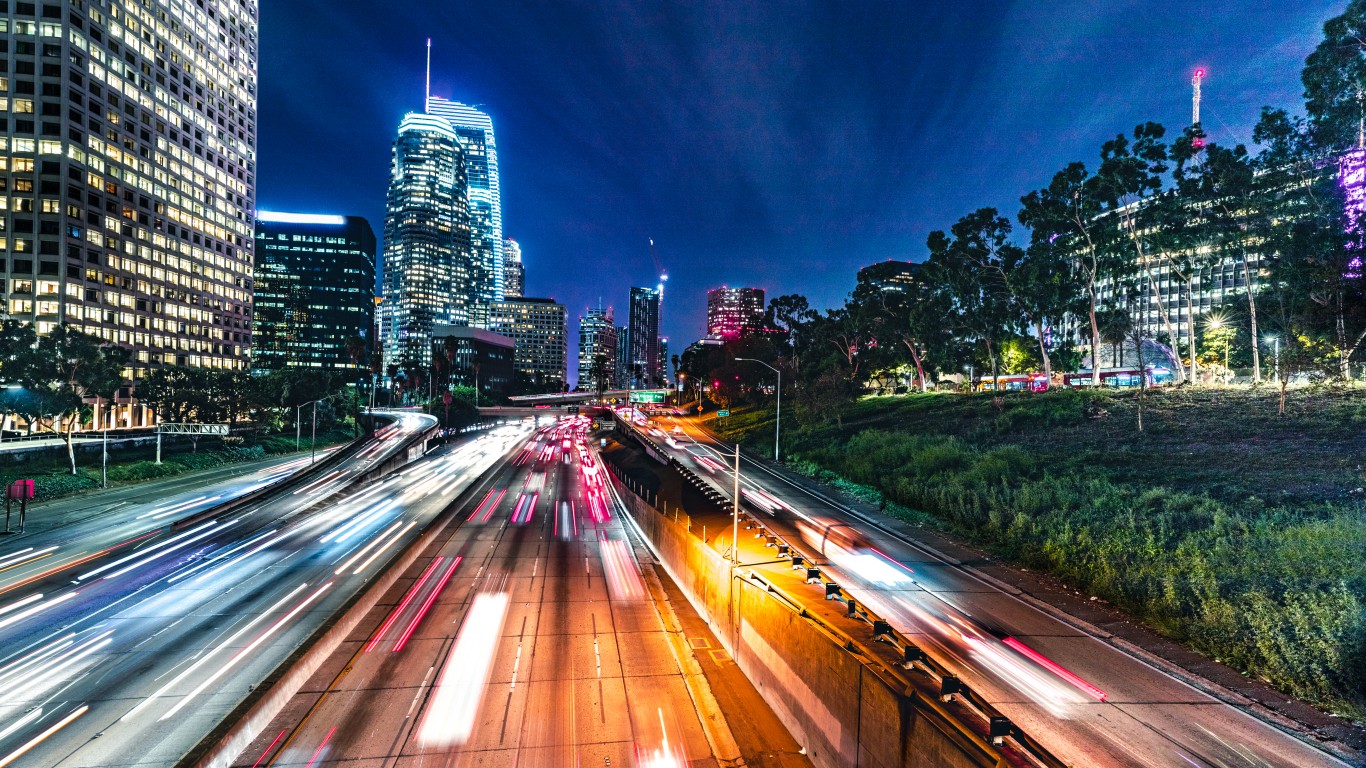
Published:

One silver lining to the many measures taken to slow the spread of the new coronavirus has been the elimination of traffic congestion in the country’s biggest cities. Travel speeds have increased nearly across the board in urban centers. It was not long ago that residents in these cities were used to deal with heavy traffic on a near daily basis.
It has been a few weeks now that most Americans have been urged or ordered to stay home, limit nonessential travel, and avoid large gatherings and crowded places. Many are now working from home and use delivery to get groceries and other provisions. All these measures have led to the decline in congestion, according to transportation data company INRIX.
24/7 Wall St. has reviewed the change in vehicle miles traveled (VMT) — as well as the increase in speeds at which people are traveling — amid the COVID-19 pandemic in the 25 most populous U.S. cities using data from INRIX.
Some of the cities earliest to adopt stay at home measures — including Seattle, San Francisco, and New York City — had the earliest increases in average traffic speeds. However, it was Chicago, Los Angeles, Boston, and Washington D.C. that saw the largest increases in speeds by March 13, at which time each city had undergone increases of more than 30%.
By Friday, March 20, automotive speed had increased dramatically enough to qualify as free-flow in America’s 25 largest metropolitan areas. The change was most dramatic in Los Angeles, where traffic speeds increased by 75% compared to a typical day at 5:30 p.m. Chicago was not far behind, with an increased speed of 74%. This change is surely a relief for residents who continue to use the roads, especially in the latter city, which is normally among the cities with the absolute worst traffic in the world.
Congestion is now essentially nonexistent across the nation, and the average vehicle miles traveled in the biggest cities is a fraction of what it typically is. In 13 of the country’s 25 biggest cities, VMT was less than half of their normal VMT during March 28 through April 3, reflecting an extreme decrease in the movement of people and goods. While a voluntary curbing of nonessential travel is part of the reason for this change, each of the cities on the list has been under stay-at-home orders from city, county, or state governments.
Click here to see the impact of COVID-19 on traffic in America’s largest cities.
24/7 Wall St. reviewed vehicle miles traveled (VMT) for the 25 largest metropolitan areas in the U.S. for the period spanning March 28 through April 3 as provided by transportation data company INRIX. VMT measures the total number of miles traveled by all vehicles in a geographic region over a given period of time.
We also reviewed the percentage increase in travel speeds amid the COVID-19 pandemic vs. a non-pandemic typical day. We reviewed travel speeds for two dates — March 13 and March 20 — at 8 a.m. and 5:30 p.m. This data was similarly provided by INRIX.
Finally, we included the total number of COVID-19 cases for each metropolitan area using data from the New York Times.
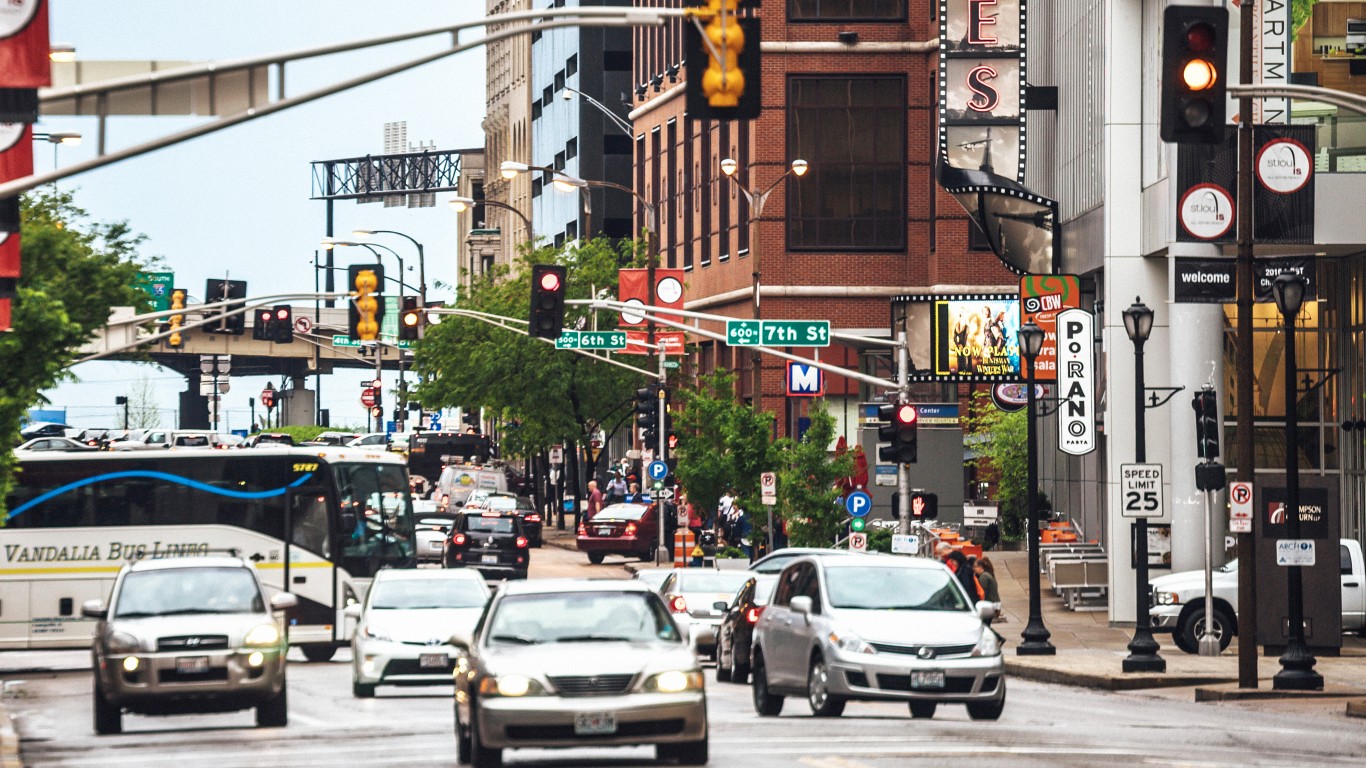
25. St. Louis
> Vehicle miles traveled March 28 – April 3: 58% of normal
> Increase in travel speeds during AM and PM rush hours as of 3/13: 18%, 22%
> Increase in travel speeds during AM and PM rush hours as of 3/20: 0%, 57%
> Confirmed COVID-19 cases as of Apr. 8, 2020: 87.35 per 100,000 — 11th highest (total: 2,450)
[in-text-ad]
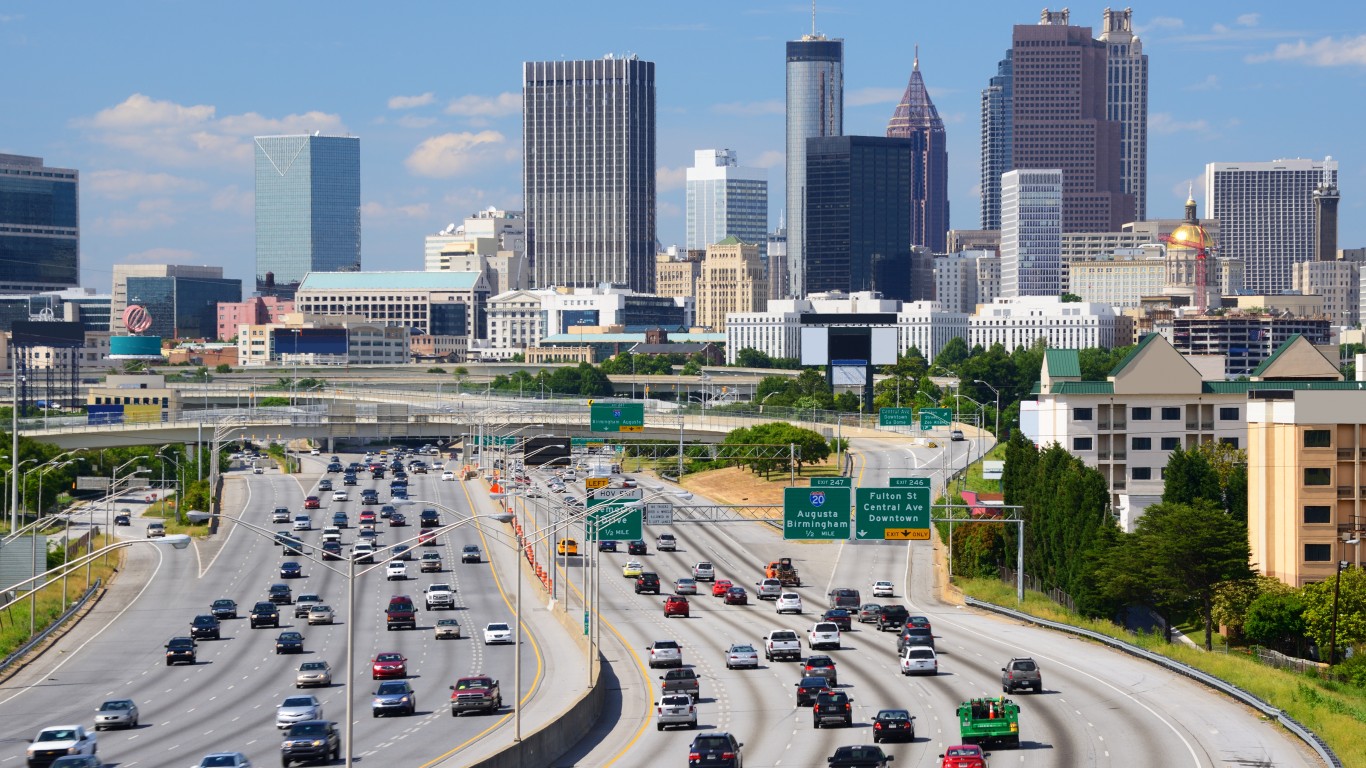
24. Atlanta
> Vehicle miles traveled March 28 – April 3: 57% of normal
> Increase in travel speeds during AM and PM rush hours as of 3/13: 11%, 20%
> Increase in travel speeds during AM and PM rush hours as of 3/20: 16%, 40%
> Confirmed COVID-19 cases as of Apr. 8, 2020: 85.77 per 100,000 — 12th highest (total: 5,104)
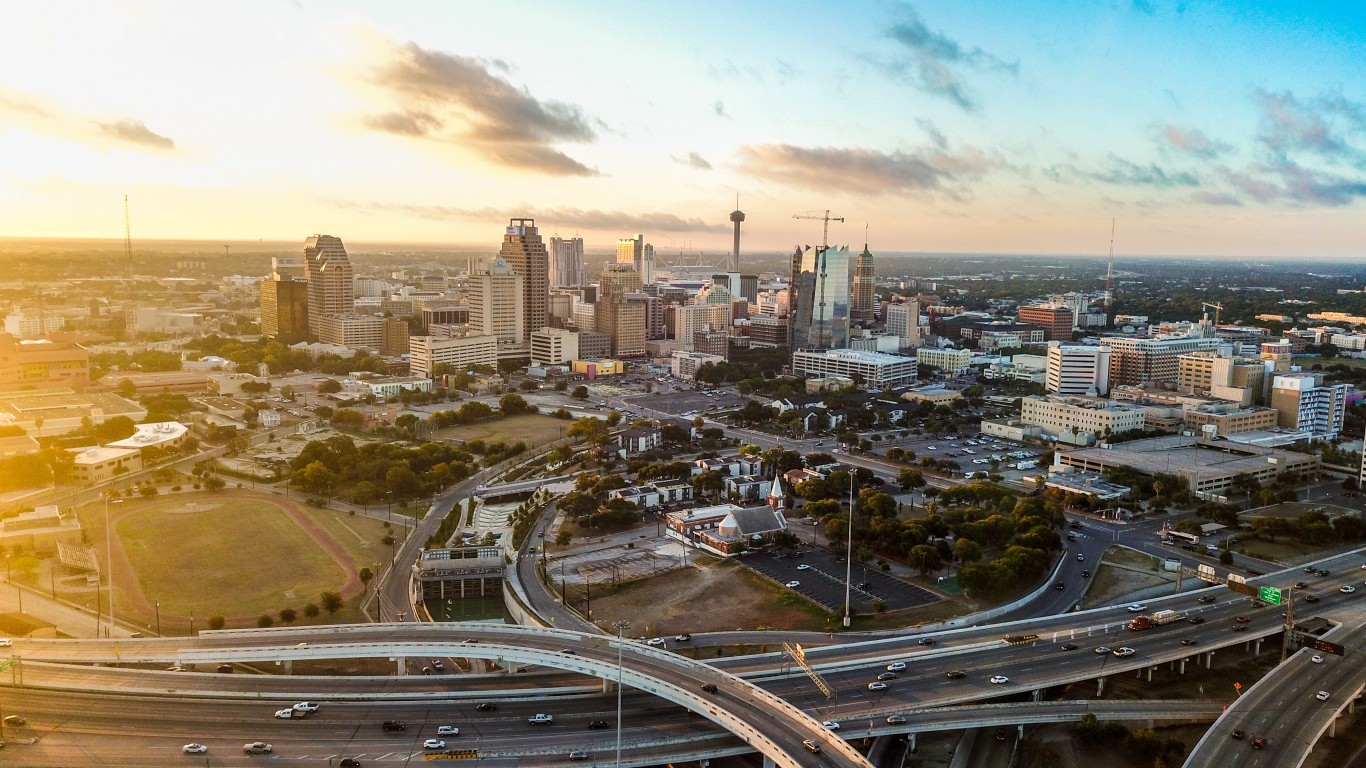
23. San Antonio
> Vehicle miles traveled March 28 – April 3: 56% of normal
> Increase in travel speeds during AM and PM rush hours as of 3/13: 6%, 14%
> Increase in travel speeds during AM and PM rush hours as of 3/20: 11%, 31%
> Confirmed COVID-19 cases as of Apr. 8, 2020: 24.46 per 100,000 — 2nd lowest (total: 616)
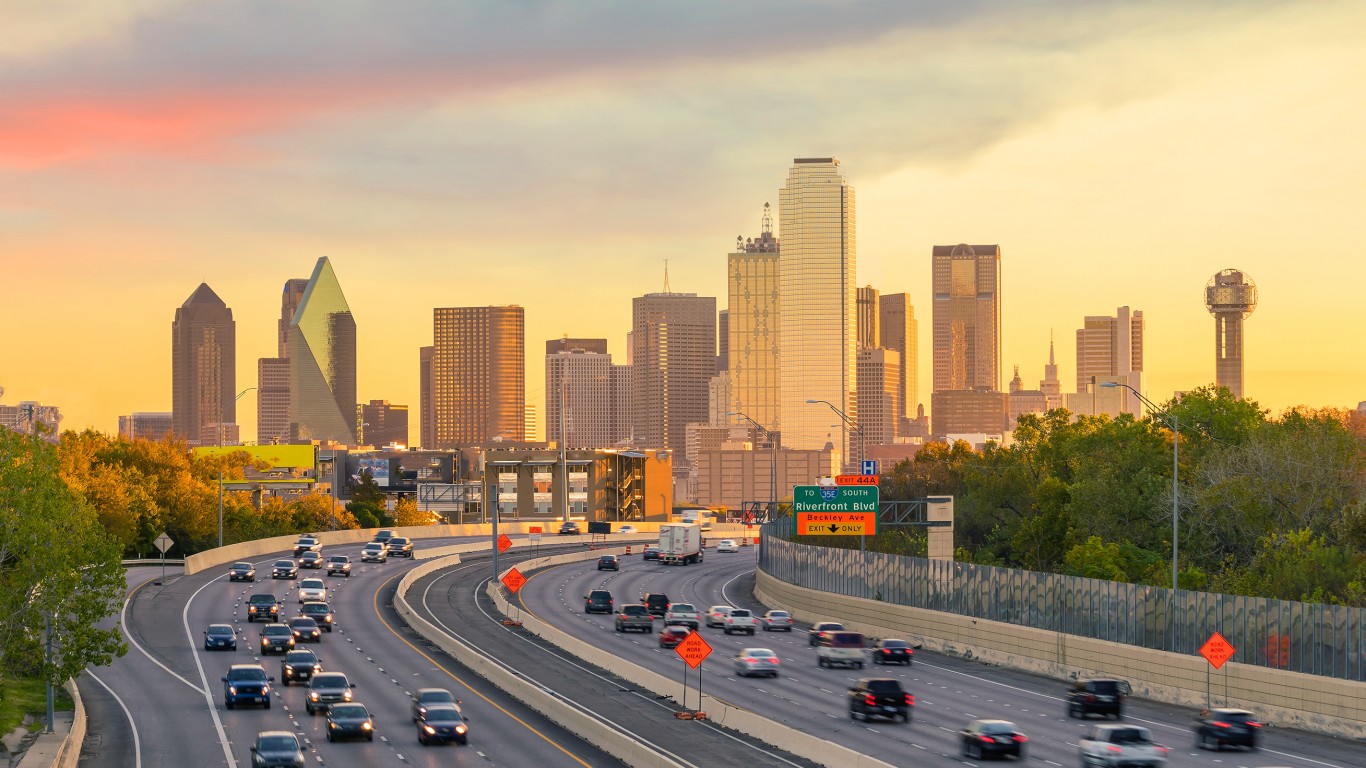
22. Dallas
> Vehicle miles traveled March 28 – April 3: 55% of normal
> Increase in travel speeds during AM and PM rush hours as of 3/13: 0%, 20%
> Increase in travel speeds during AM and PM rush hours as of 3/20: 13%, 38%
> Confirmed COVID-19 cases as of Apr. 8, 2020: 37.39 per 100,000 — 5th lowest (total: 2,819)
[in-text-ad-2]
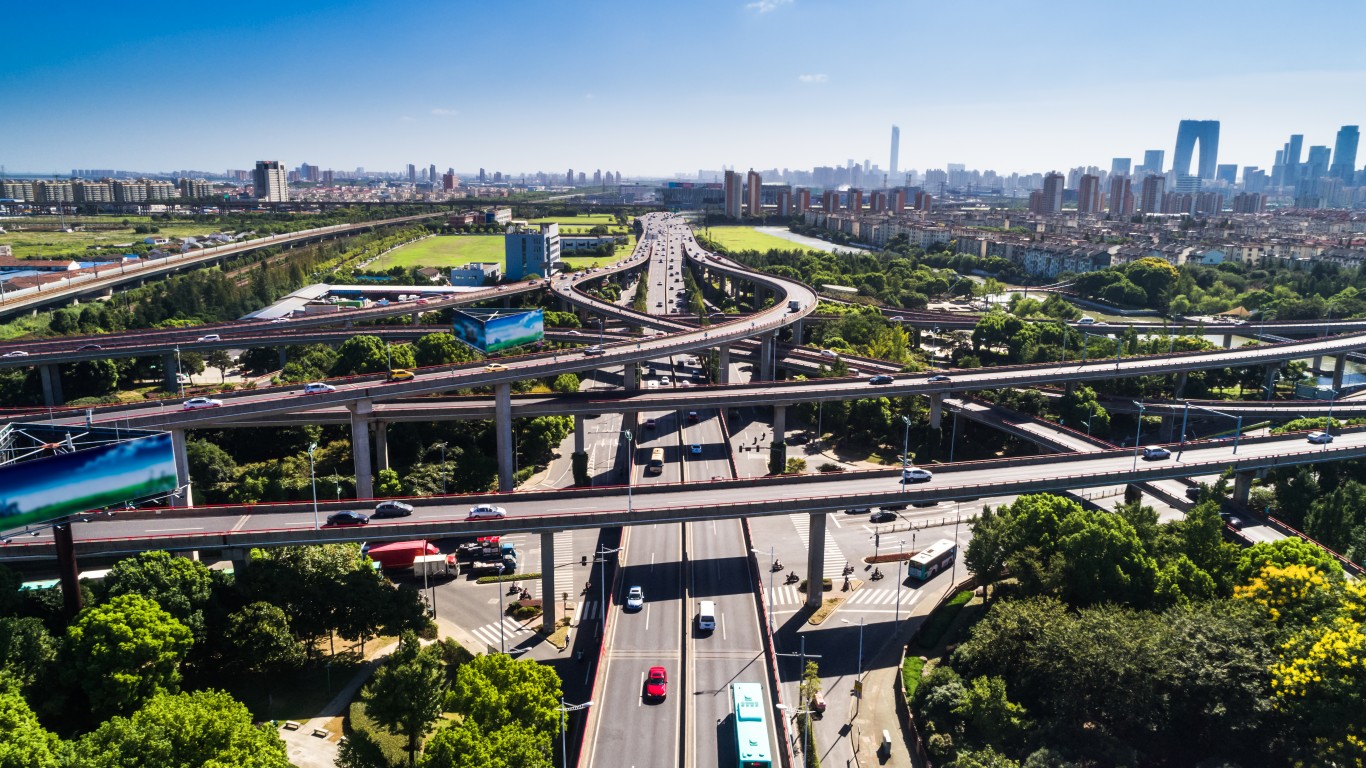
21. Houston
> Vehicle miles traveled March 28 – April 3: 55% of normal
> Increase in travel speeds during AM and PM rush hours as of 3/13: 12%, 24%
> Increase in travel speeds during AM and PM rush hours as of 3/20: 21%, 30%
> Confirmed COVID-19 cases as of Apr. 8, 2020: 49.72 per 100,000 — 8th lowest (total: 3,479)
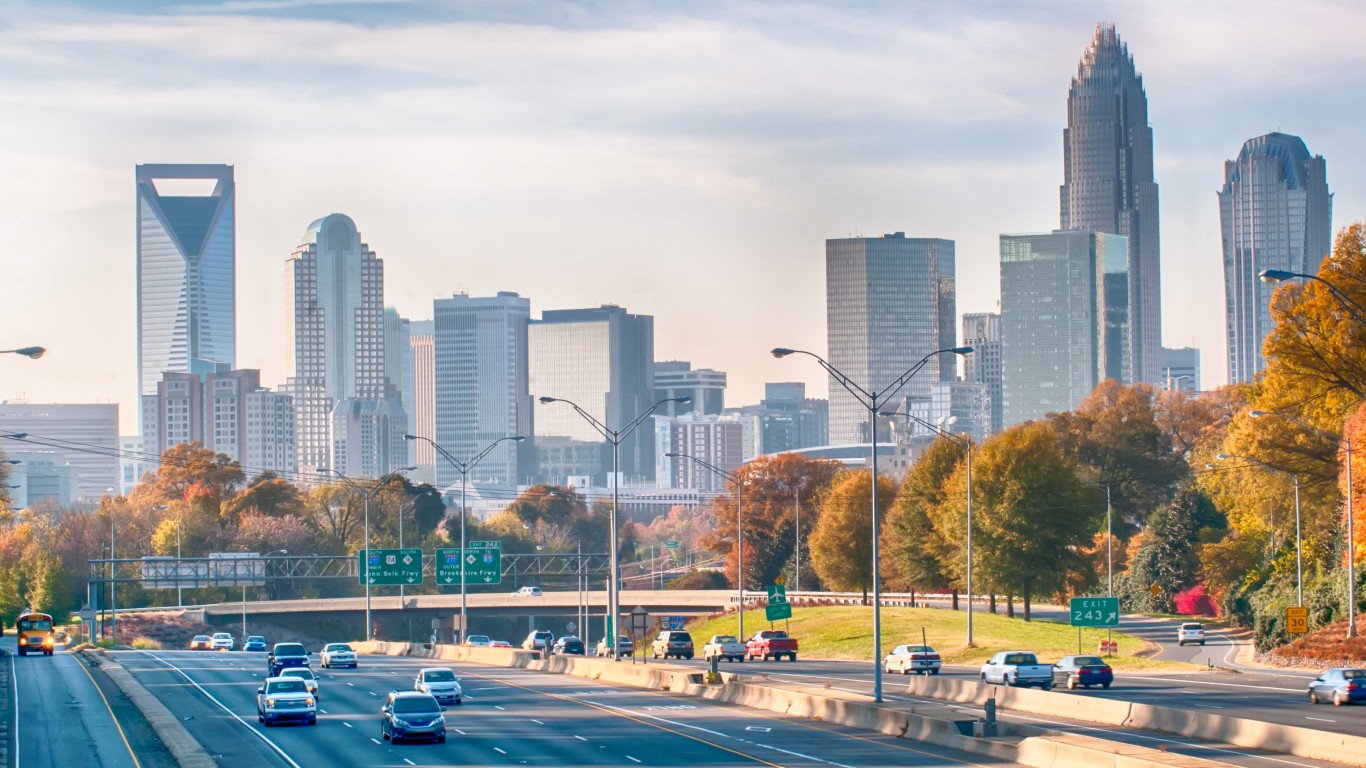
20. Charlotte
> Vehicle miles traveled March 28 – April 3: 54% of normal
> Increase in travel speeds during AM and PM rush hours as of 3/13: 9%, 26%
> Increase in travel speeds during AM and PM rush hours as of 3/20: 16%, 42%
> Confirmed COVID-19 cases as of Apr. 8, 2020: 53.56 per 100,000 — 9th lowest (total: 1,376)
[in-text-ad]
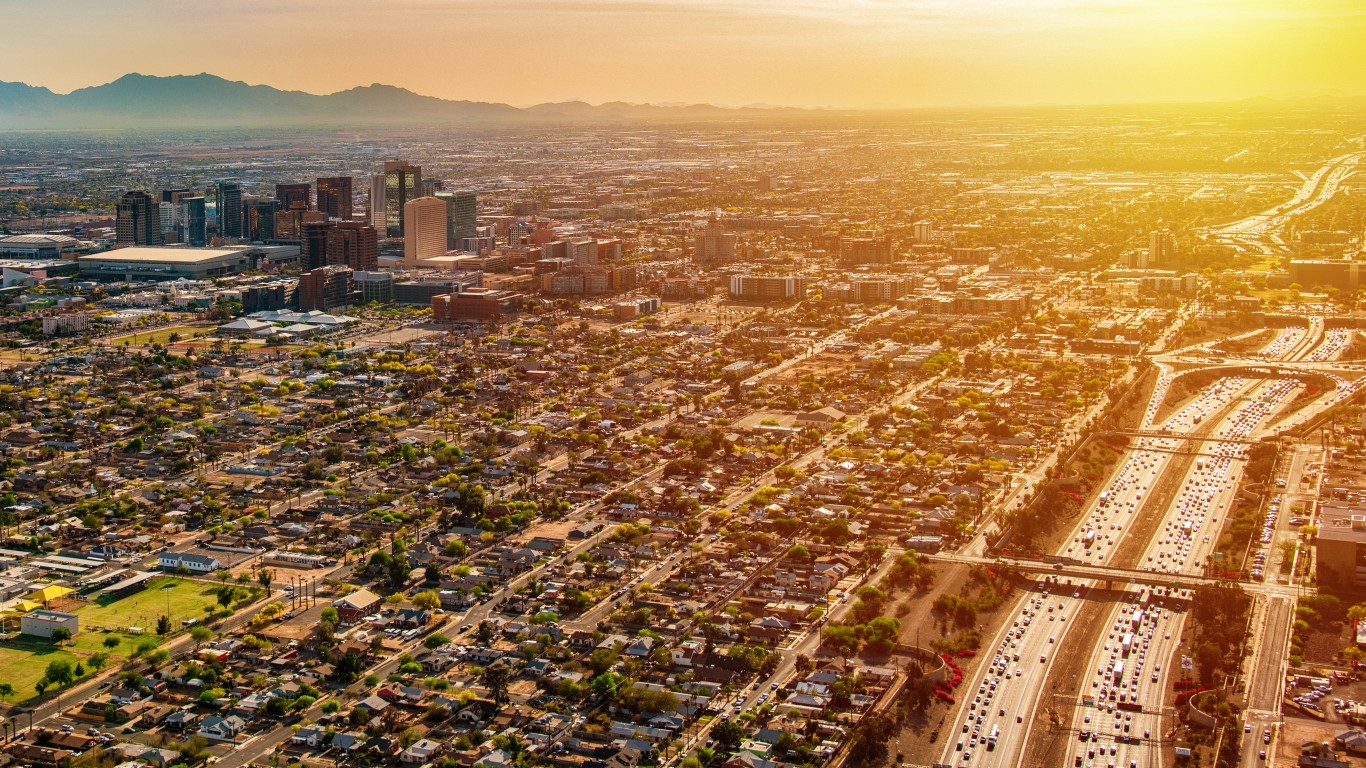
19. Phoenix
> Vehicle miles traveled March 28 – April 3: 53% of normal
> Increase in travel speeds during AM and PM rush hours as of 3/13: 20%, 21%
> Increase in travel speeds during AM and PM rush hours as of 3/20: 19%, 60%
> Confirmed COVID-19 cases as of Apr. 8, 2020: 34.64 per 100,000 — 4th lowest (total: 1,683)
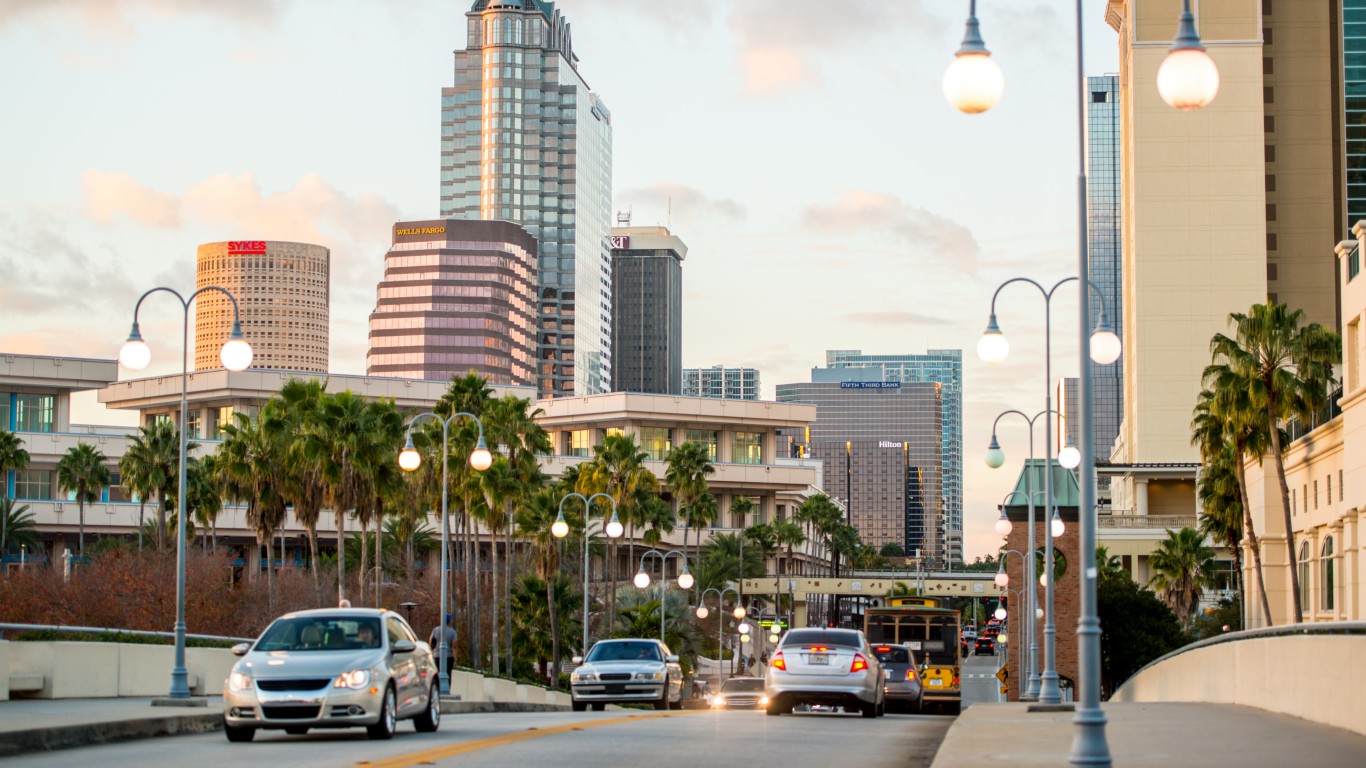
18. Tampa/St. Petersburg
> Vehicle miles traveled March 28 – April 3: 53% of normal
> Increase in travel speeds during AM and PM rush hours as of 3/13: 10%, 20%
> Increase in travel speeds during AM and PM rush hours as of 3/20: 24%, 52%
> Confirmed COVID-19 cases as of Apr. 8, 2020: 38.50 per 100,000 — 6th lowest (total: 1,210)
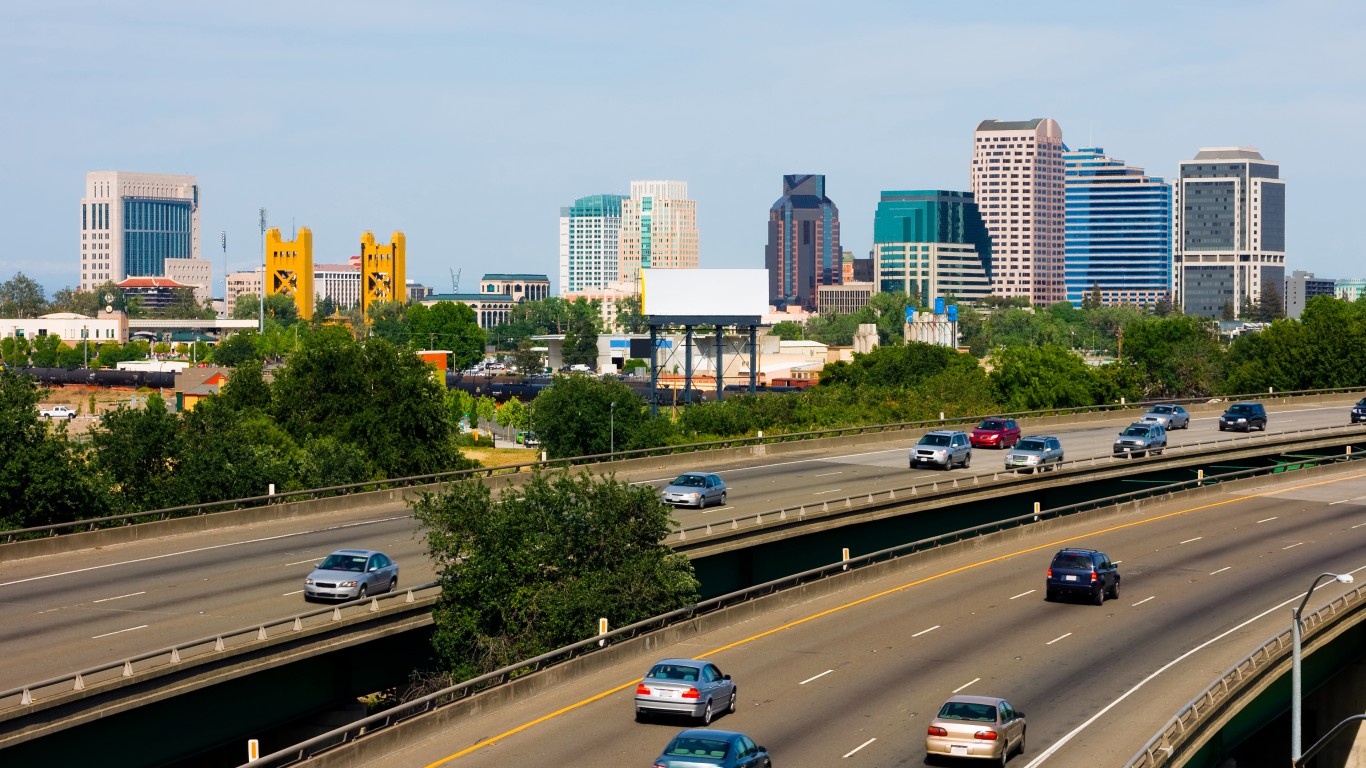
17. Sacramento
> Vehicle miles traveled March 28 – April 3: 52% of normal
> Increase in travel speeds during AM and PM rush hours as of 3/13: 10%, 22%
> Increase in travel speeds during AM and PM rush hours as of 3/20: 21%, 55%
> Confirmed COVID-19 cases as of Apr. 8, 2020: 33.77 per 100,000 — 3rd lowest (total: 792)
[in-text-ad-2]
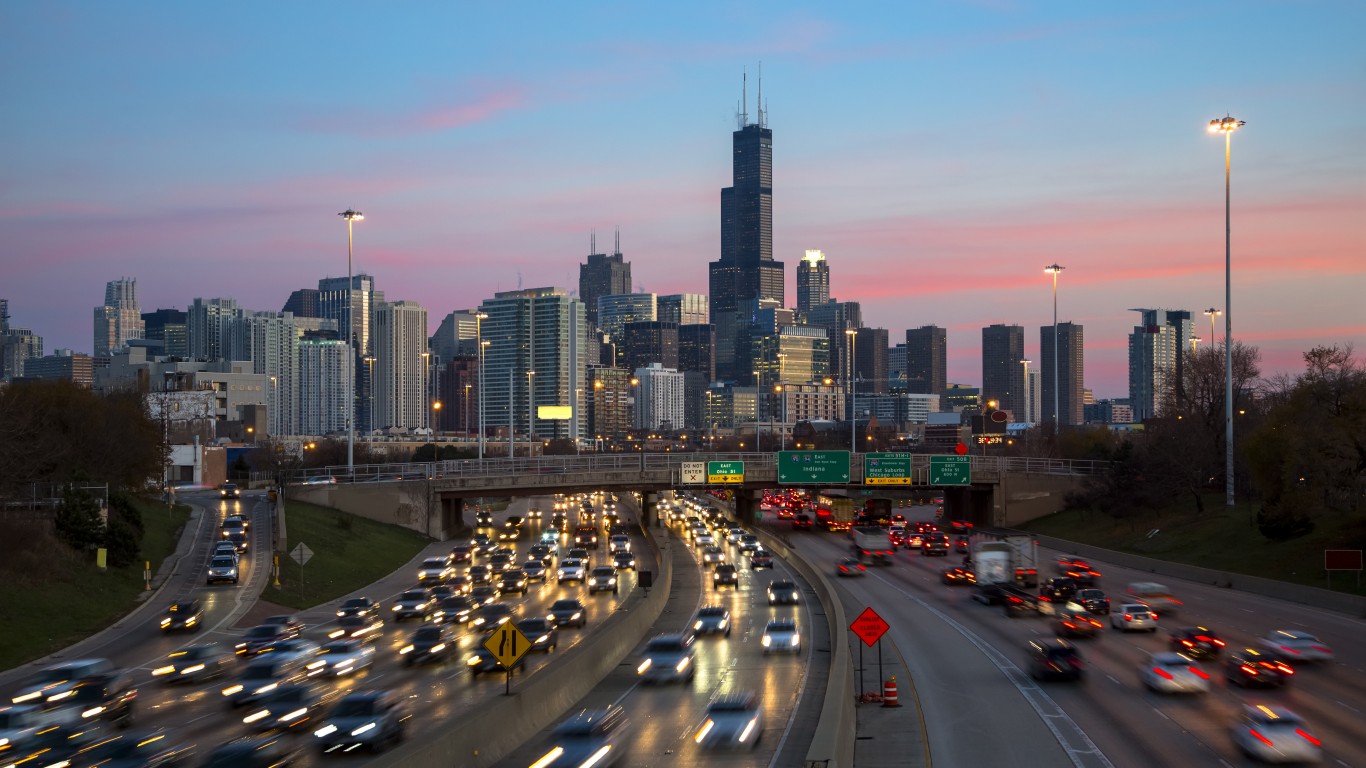
16. Chicago
> Vehicle miles traveled March 28 – April 3: 52% of normal
> Increase in travel speeds during AM and PM rush hours as of 3/13: 8%, 35%
> Increase in travel speeds during AM and PM rush hours as of 3/20: 44%, 74%
> Confirmed COVID-19 cases as of Apr. 8, 2020: 154.18 per 100,000 — 6th highest (total: 14,644)
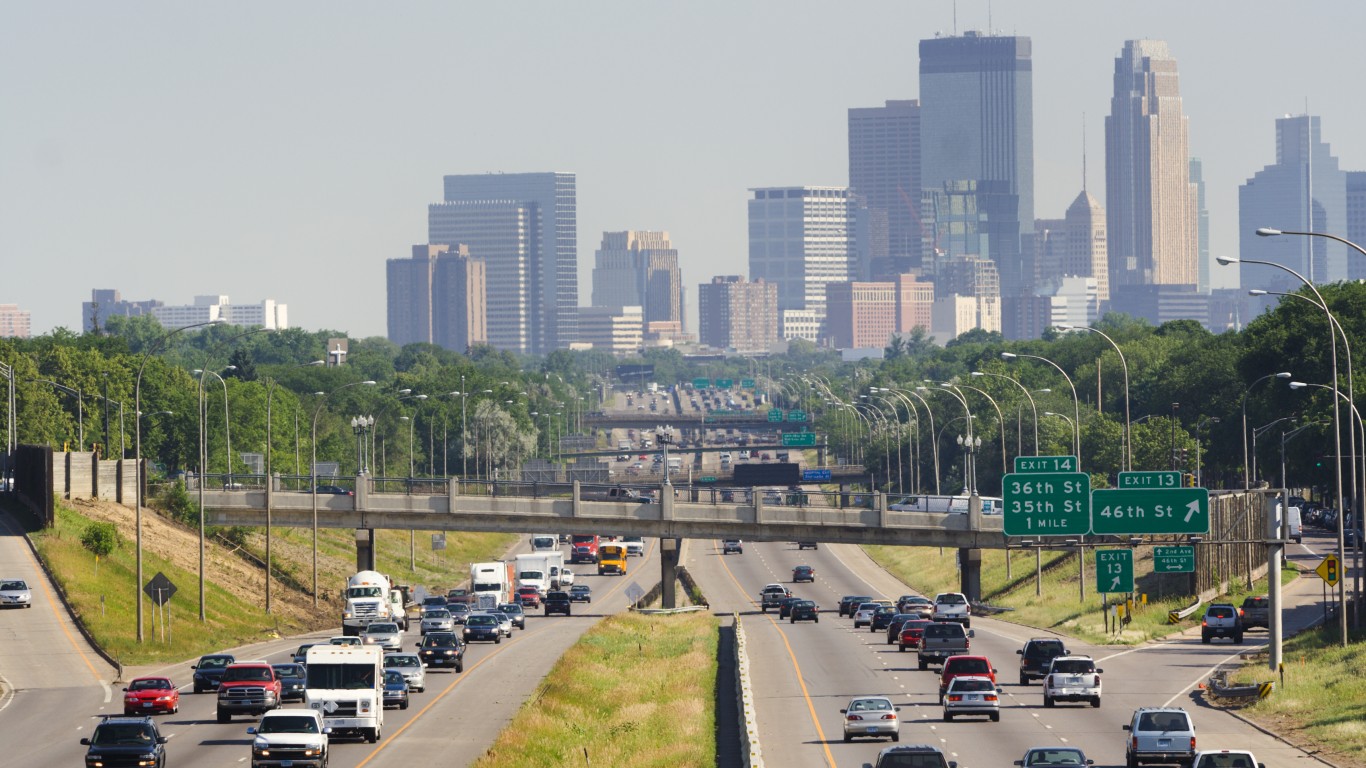
15. Minneapolis
> Vehicle miles traveled March 28 – April 3: 51% of normal
> Increase in travel speeds during AM and PM rush hours as of 3/13: 7%, 17%
> Increase in travel speeds during AM and PM rush hours as of 3/20: 14%, 38%
> Confirmed COVID-19 cases as of Apr. 8, 2020: 20.36 per 100,000 — the lowest (total: 739)
[in-text-ad]
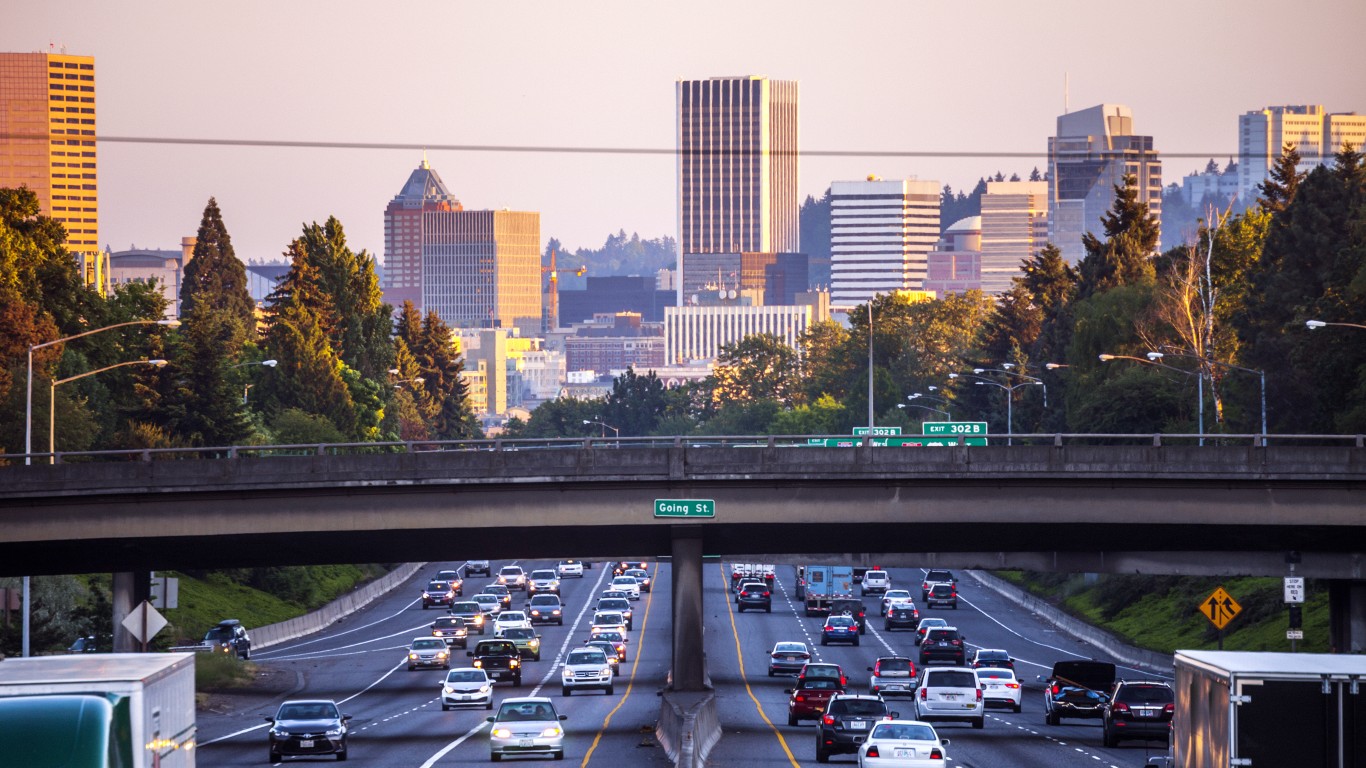
14. Portland
> Vehicle miles traveled March 28 – April 3: 50% of normal
> Increase in travel speeds during AM and PM rush hours as of 3/13: 11%, 30%
> Increase in travel speeds during AM and PM rush hours as of 3/20: 19%, 52%
> Confirmed COVID-19 cases as of Apr. 8, 2020: 73.96 per 100,000 — 13th lowest (total: 396)
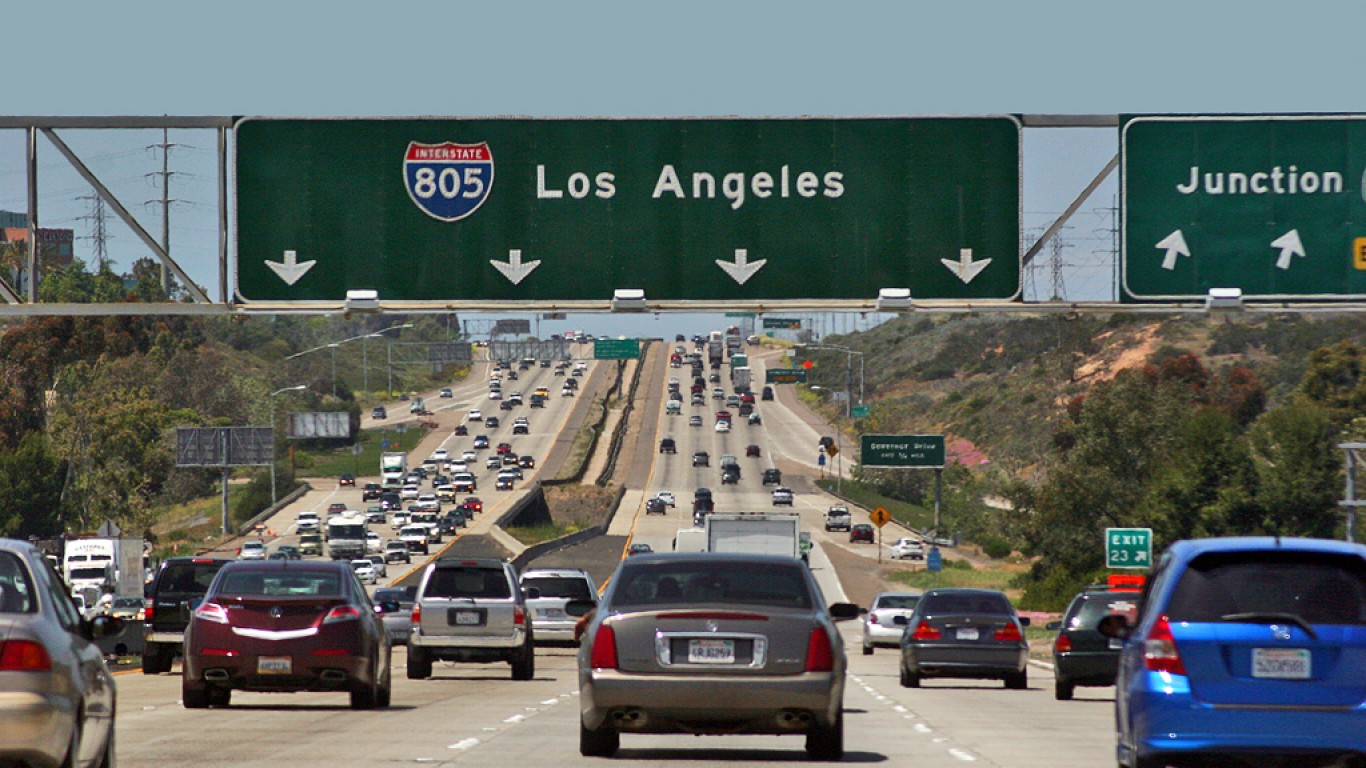
13. Los Angeles
> Vehicle miles traveled March 28 – April 3: 47% of normal
> Increase in travel speeds during AM and PM rush hours as of 3/13: 9%, 38%
> Increase in travel speeds during AM and PM rush hours as of 3/20: 43%, 75%
> Confirmed COVID-19 cases as of Apr. 8, 2020: 64.30 per 100,000 — 12th lowest (total: 8,546)
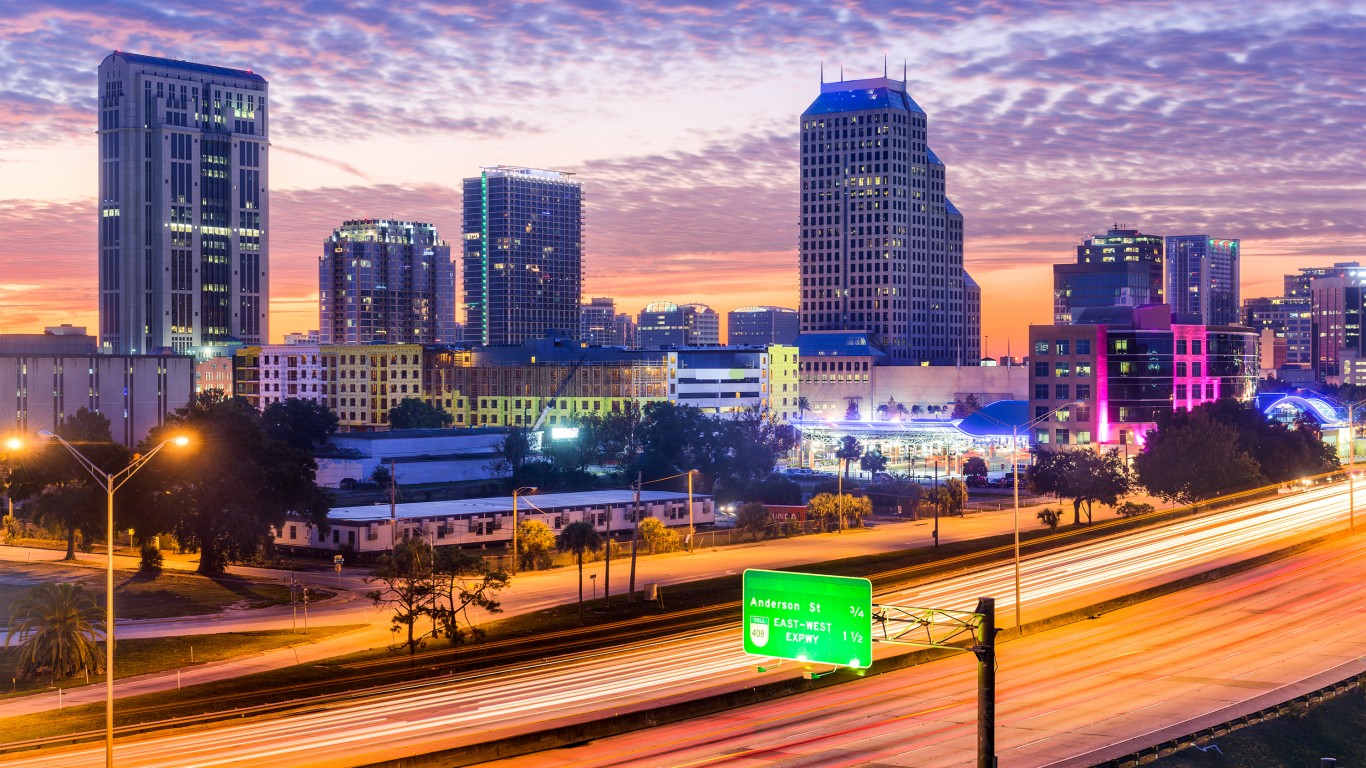
12. Orlando
> Vehicle miles traveled March 28 – April 3: 46% of normal
> Increase in travel speeds during AM and PM rush hours as of 3/13: 8%, 17%
> Increase in travel speeds during AM and PM rush hours as of 3/20: 20%, 34%
> Confirmed COVID-19 cases as of Apr. 8, 2020: 56.63 per 100,000 — 11th lowest (total: 1,457)
[in-text-ad-2]
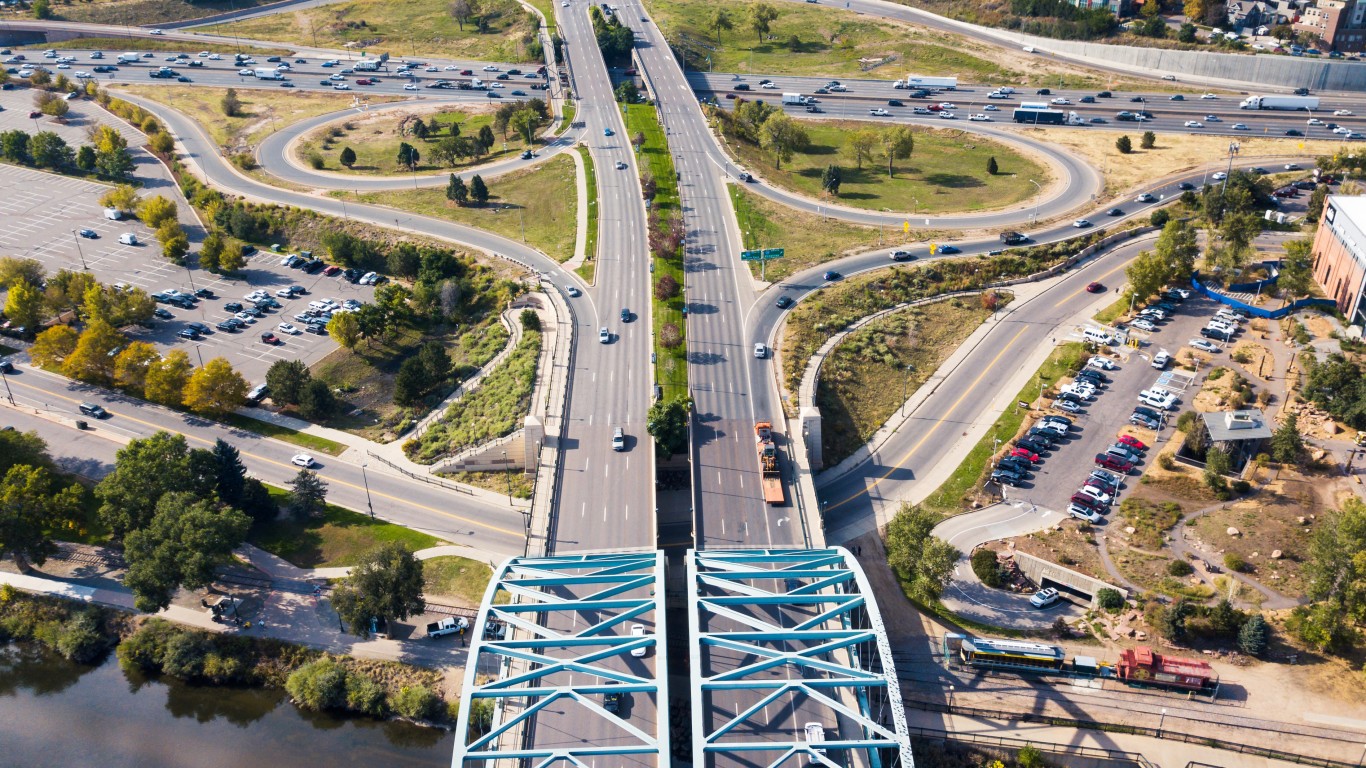
11. Denver
> Vehicle miles traveled March 28 – April 3: 46% of normal
> Increase in travel speeds during AM and PM rush hours as of 3/13: 10%, 25%
> Increase in travel speeds during AM and PM rush hours as of 3/20: 14%, 43%
> Confirmed COVID-19 cases as of Apr. 8, 2020: 103.53 per 100,000 — 8th highest (total: 3,036)
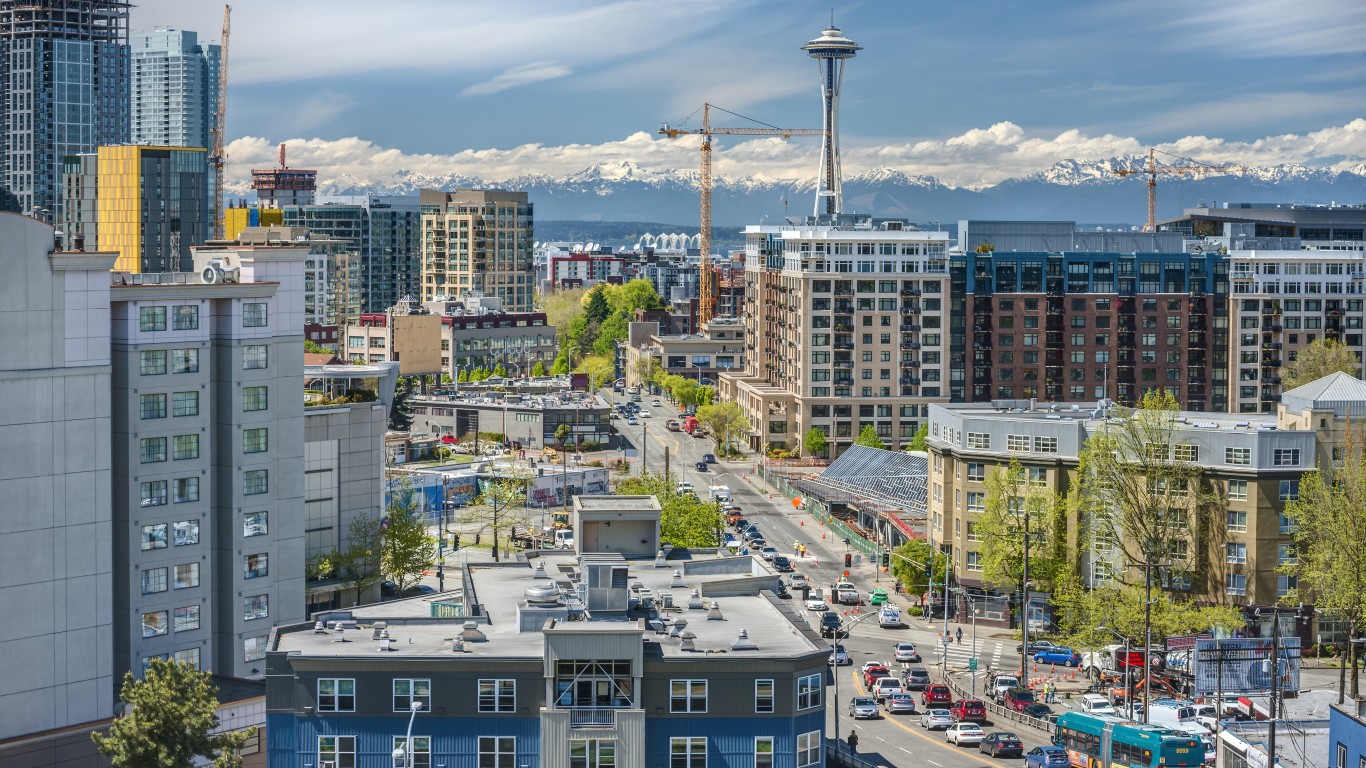
10. Seattle
> Vehicle miles traveled March 28 – April 3: 46% of normal
> Increase in travel speeds during AM and PM rush hours as of 3/13: 15%, 16%
> Increase in travel speeds during AM and PM rush hours as of 3/20: 23%, 38%
> Confirmed COVID-19 cases as of Apr. 8, 2020: 157.01 per 100,000 — 5th highest (total: 6,185)
[in-text-ad]
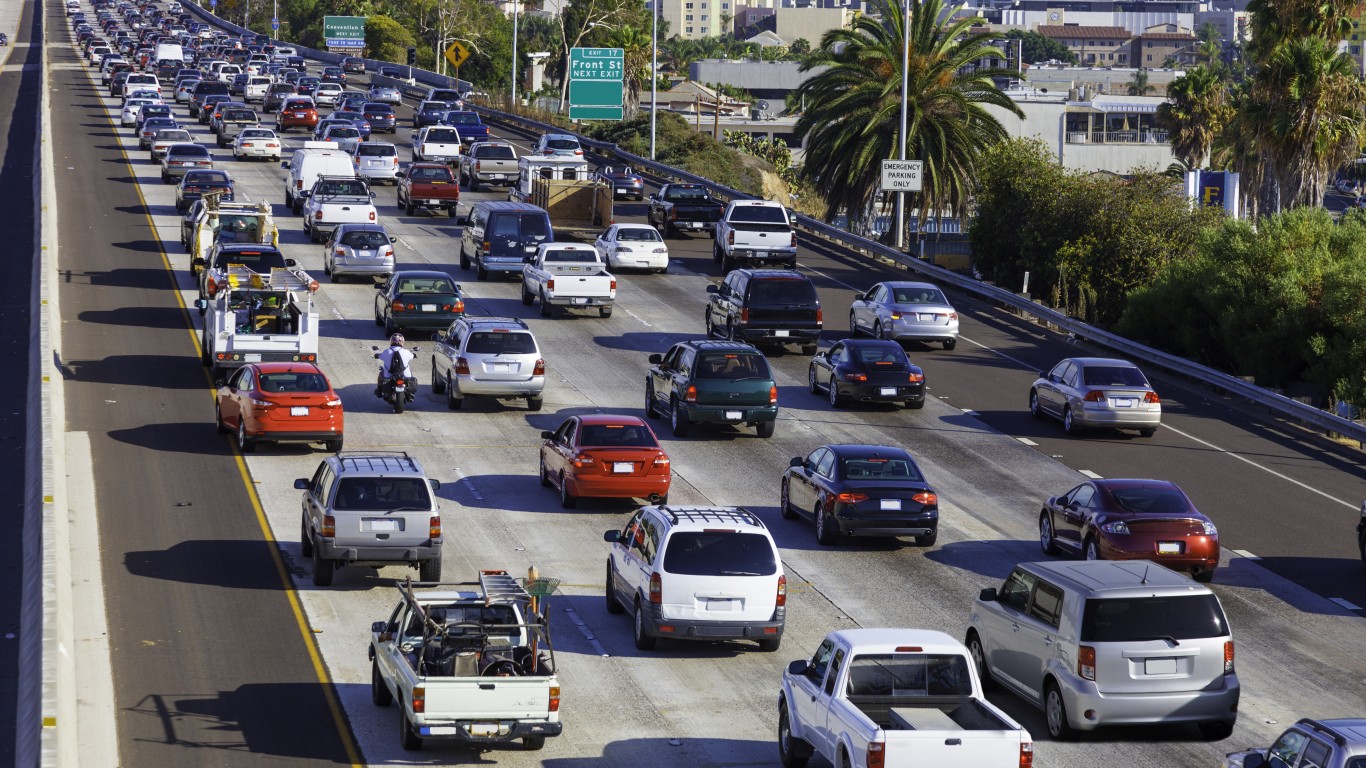
9. San Diego
> Vehicle miles traveled March 28 – April 3: 44% of normal
> Increase in travel speeds during AM and PM rush hours as of 3/13: 0%, 7%
> Increase in travel speeds during AM and PM rush hours as of 3/20: 21%, 36%
> Confirmed COVID-19 cases as of Apr. 8, 2020: 45.76 per 100,000 — 7th lowest (total: 1,530)
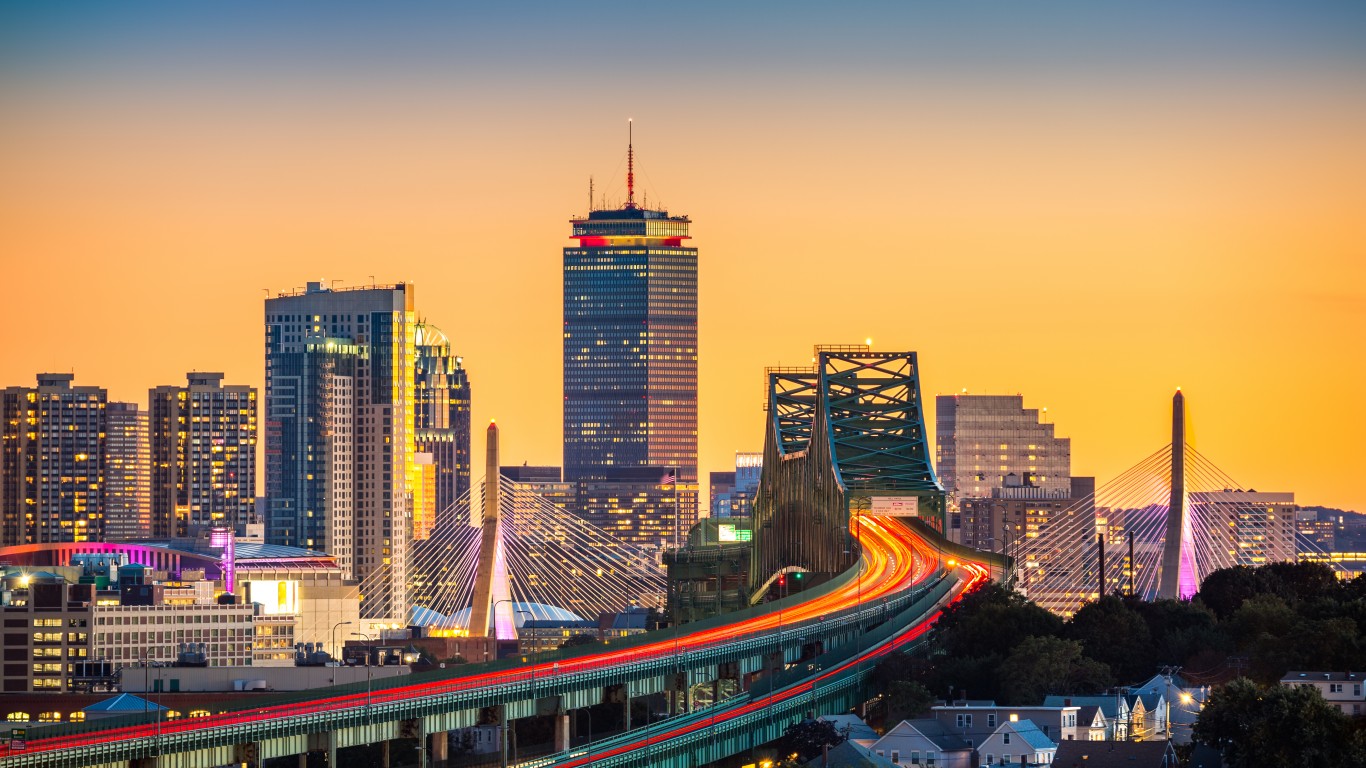
8. Boston
> Vehicle miles traveled March 28 – April 3: 44% of normal
> Increase in travel speeds during AM and PM rush hours as of 3/13: 10%, 32%
> Increase in travel speeds during AM and PM rush hours as of 3/20: 25%, 57%
> Confirmed COVID-19 cases as of Apr. 8, 2020: 259.86 per 100,000 — 3rd highest (total: 12,669)
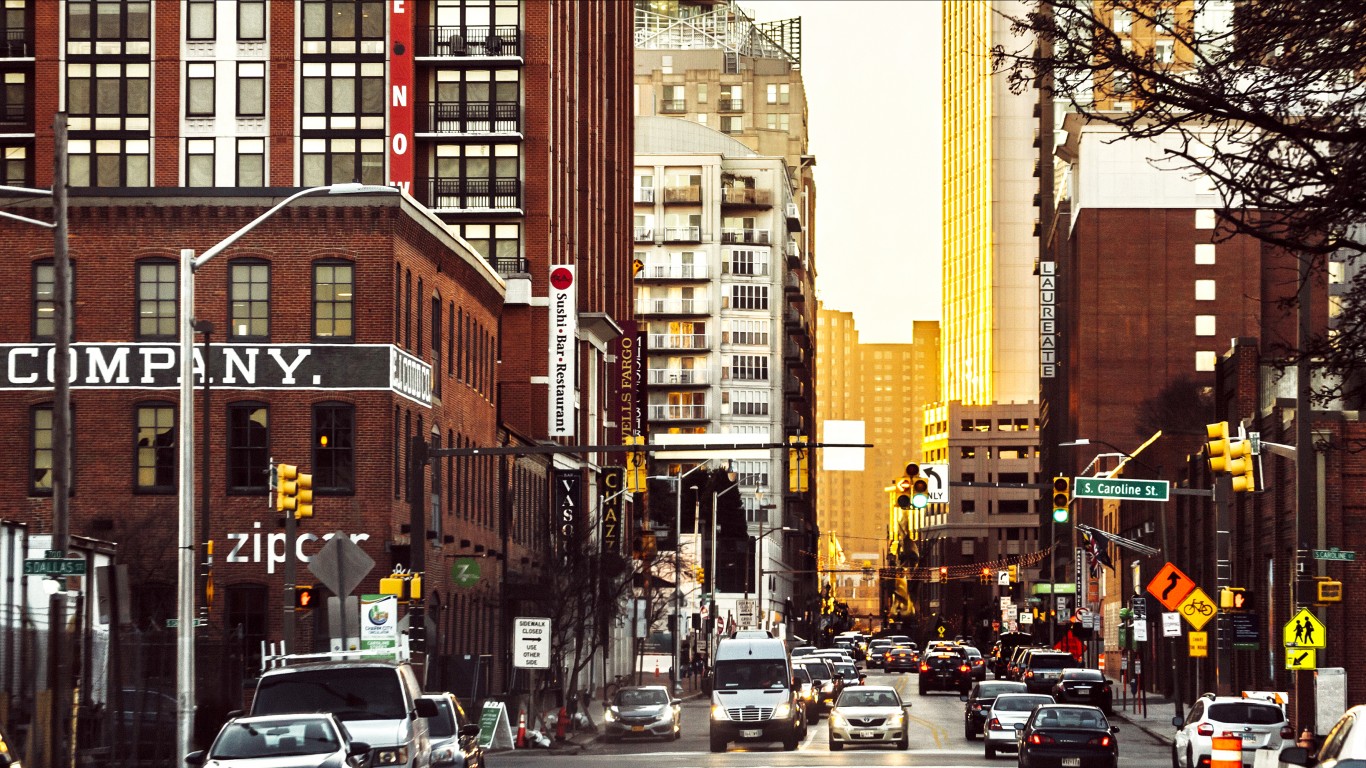
7. Baltimore
> Vehicle miles traveled March 28 – April 3: 42% of normal
> Increase in travel speeds during AM and PM rush hours as of 3/13: 5%, 20%
> Increase in travel speeds during AM and PM rush hours as of 3/20: 17%, 35%
> Confirmed COVID-19 cases as of Apr. 8, 2020: 87.95 per 100,000 — 10th highest (total: 2,465)
[in-text-ad-2]
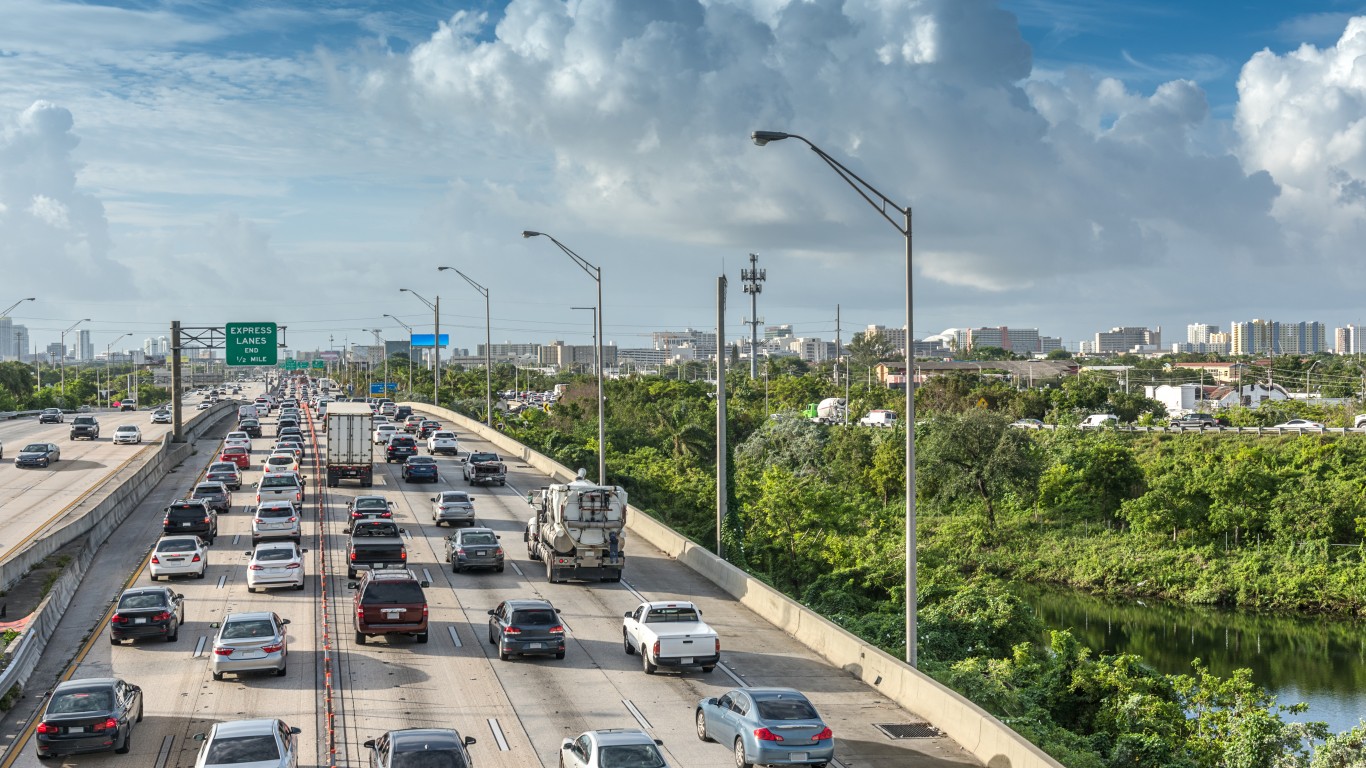
6. Miami
> Vehicle miles traveled March 28 – April 3: 42% of normal
> Increase in travel speeds during AM and PM rush hours as of 3/13: 11%, 27%
> Increase in travel speeds during AM and PM rush hours as of 3/20: 25%, 57%
> Confirmed COVID-19 cases as of Apr. 8, 2020: 145.95 per 100,000 — 7th highest (total: 9,047)
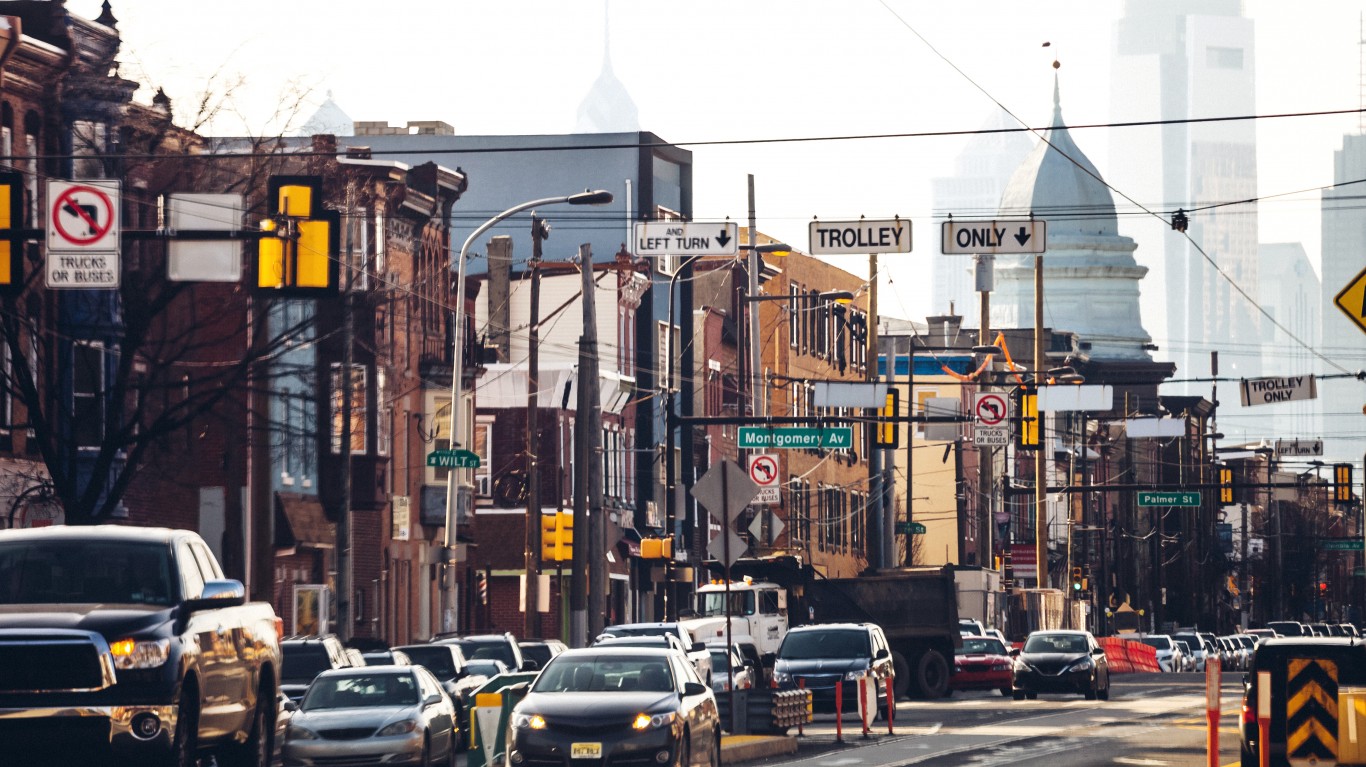
5. Philadelphia
> Vehicle miles traveled March 28 – April 3: 42% of normal
> Increase in travel speeds during AM and PM rush hours as of 3/13: 7%, 24%
> Increase in travel speeds during AM and PM rush hours as of 3/20: 24%, 38%
> Confirmed COVID-19 cases as of Apr. 8, 2020: 180.68 per 100,000 — 4th highest (total: 11,015)
[in-text-ad]
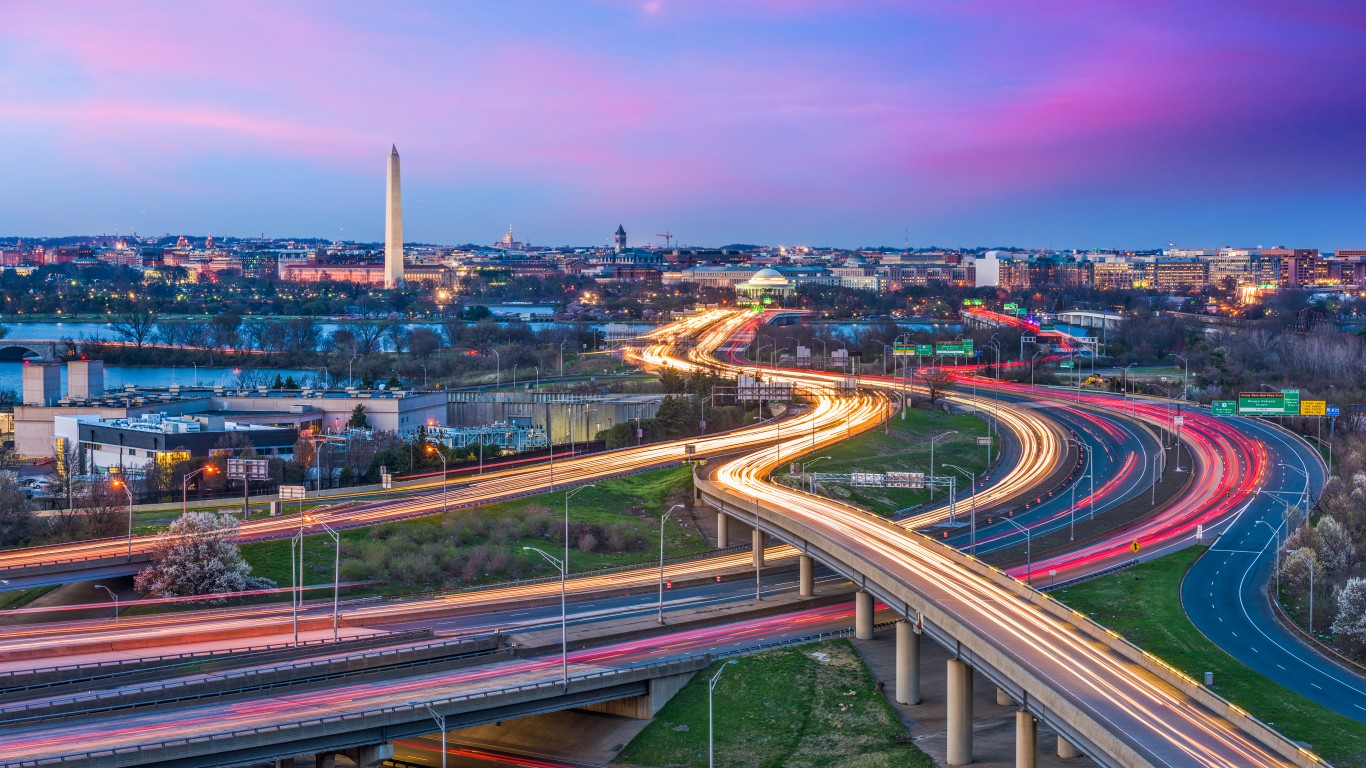
4. Washington DC
> Vehicle miles traveled March 28 – April 3: 41% of normal
> Increase in travel speeds during AM and PM rush hours as of 3/13: 6%, 32%
> Increase in travel speeds during AM and PM rush hours as of 3/20: 22%, 54%
> Confirmed COVID-19 cases as of Apr. 8, 2020: 94.64 per 100,000 — 9th highest (total: 5,916)
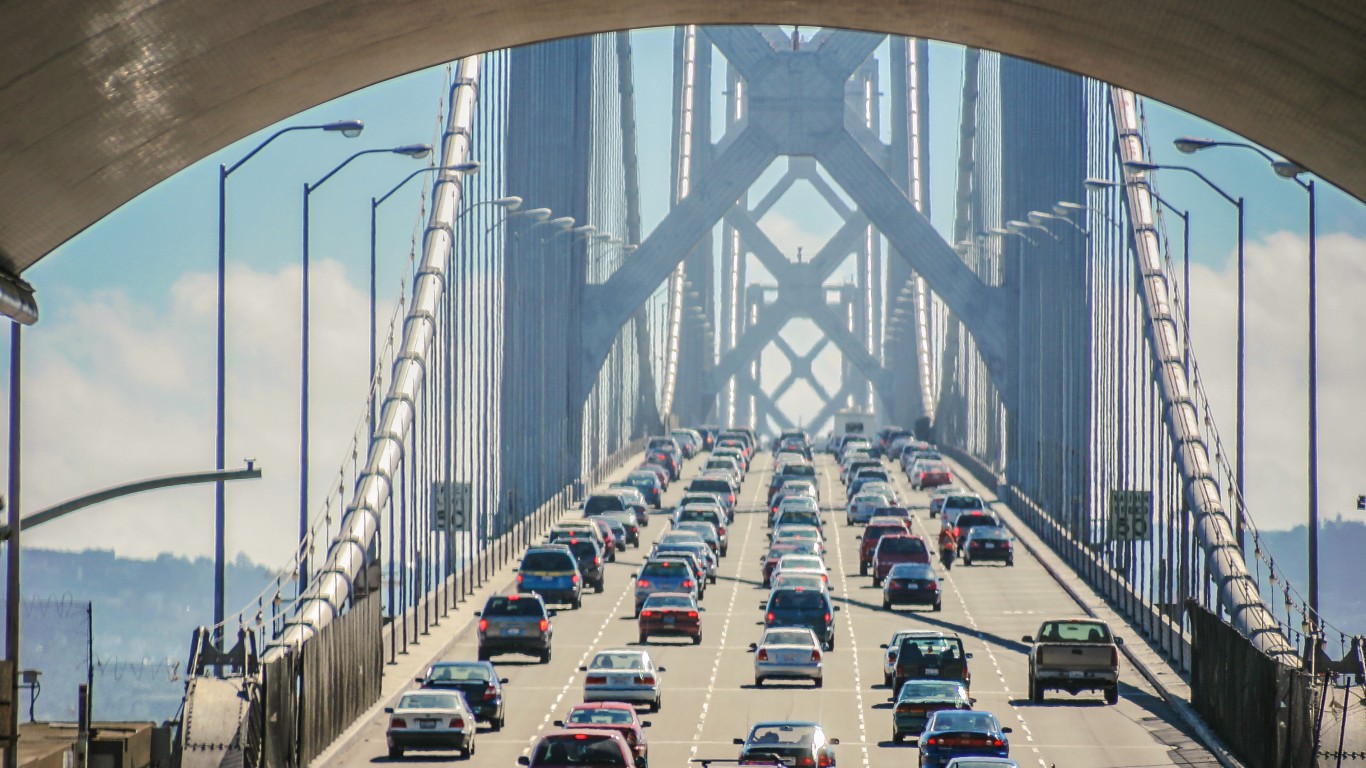
3. San Francisco
> Vehicle miles traveled March 28 – April 3: 39% of normal
> Increase in travel speeds during AM and PM rush hours as of 3/13: 17%, 29%
> Increase in travel speeds during AM and PM rush hours as of 3/20: 27%, 55%
> Confirmed COVID-19 cases as of Apr. 8, 2020: 55.02 per 100,000 — 10th lowest (total: 2,602)
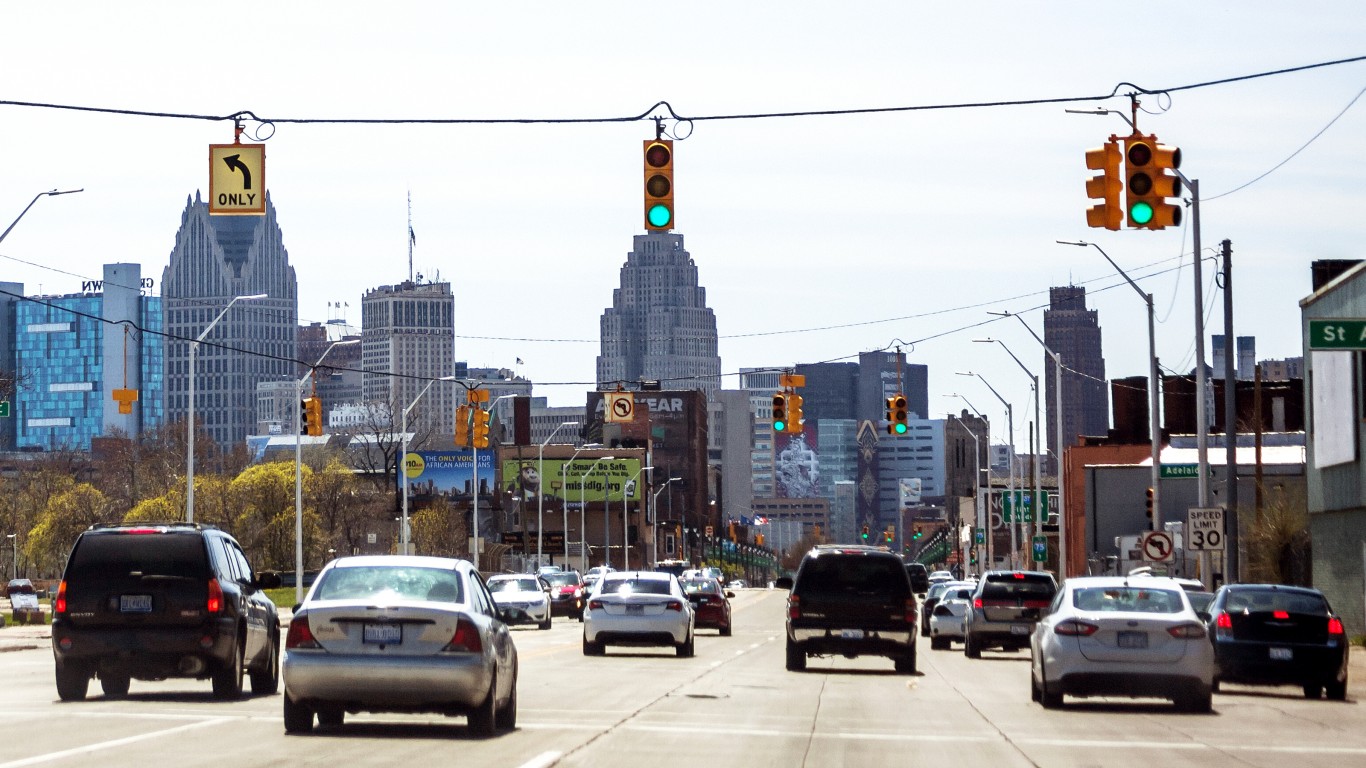
2. Detroit
> Vehicle miles traveled March 28 – April 3: 39% of normal
> Increase in travel speeds during AM and PM rush hours as of 3/13: 11%, 10%
> Increase in travel speeds during AM and PM rush hours as of 3/20: 18%, 23%
> Confirmed COVID-19 cases as of Apr. 8, 2020: 384.54 per 100,000 — 2nd highest (total: 16,637)
[in-text-ad-2]
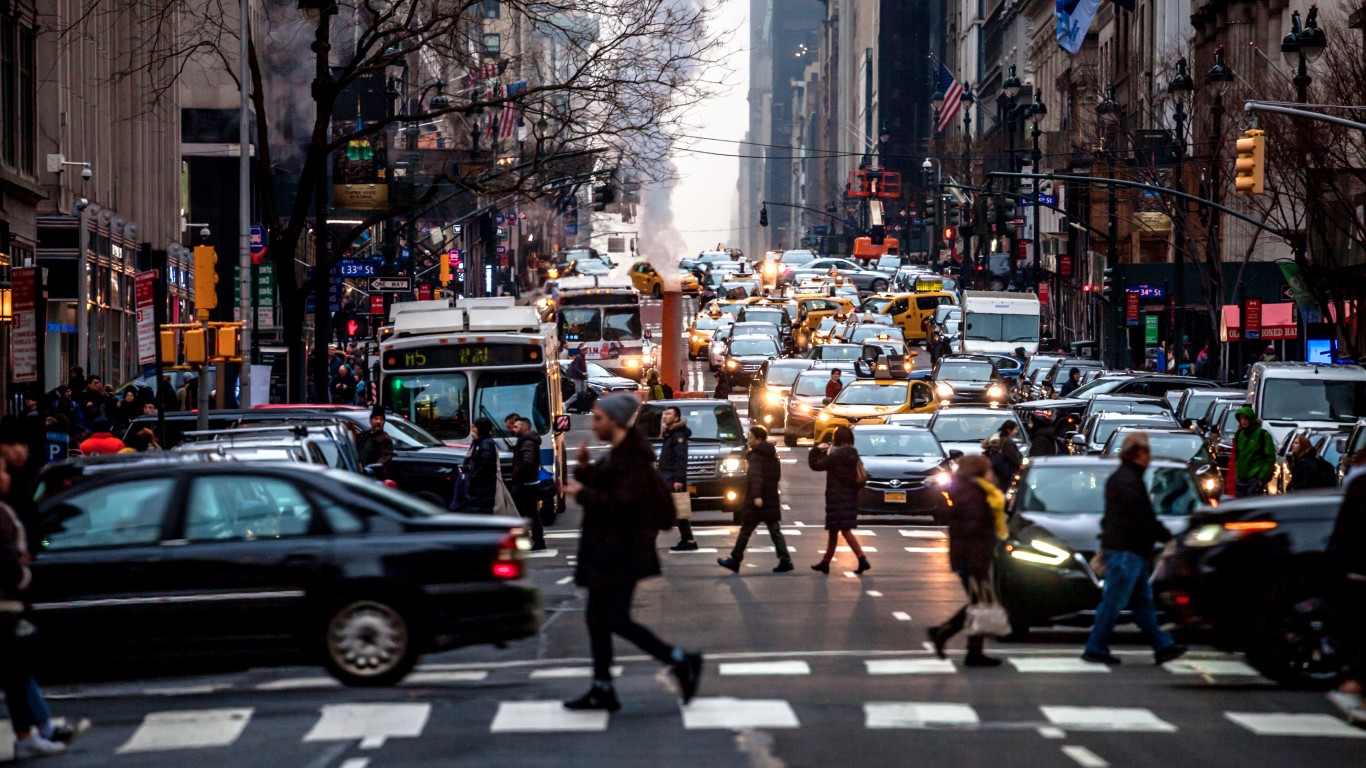
1. New York
> Vehicle miles traveled March 28 – April 3: 36% of normal
> Increase in travel speeds during AM and PM rush hours as of 3/13: 6%, 27%
> Increase in travel speeds during AM and PM rush hours as of 3/20: 39%, 54%
> Confirmed COVID-19 cases as of Apr. 8, 2020: 525.21 per 100,000 — the highest (total: 104,934)
The last few years made people forget how much banks and CD’s can pay. Meanwhile, interest rates have spiked and many can afford to pay you much more, but most are keeping yields low and hoping you won’t notice.
But there is good news. To win qualified customers, some accounts are paying almost 10x the national average! That’s an incredible way to keep your money safe and earn more at the same time. Our top pick for high yield savings accounts includes other benefits as well. You can earn up to 3.80% with a Checking & Savings Account today Sign up and get up to $300 with direct deposit. No account fees. FDIC Insured.
Click here to see how much more you could be earning on your savings today. It takes just a few minutes to open an account to make your money work for you.
Thank you for reading! Have some feedback for us?
Contact the 24/7 Wall St. editorial team.